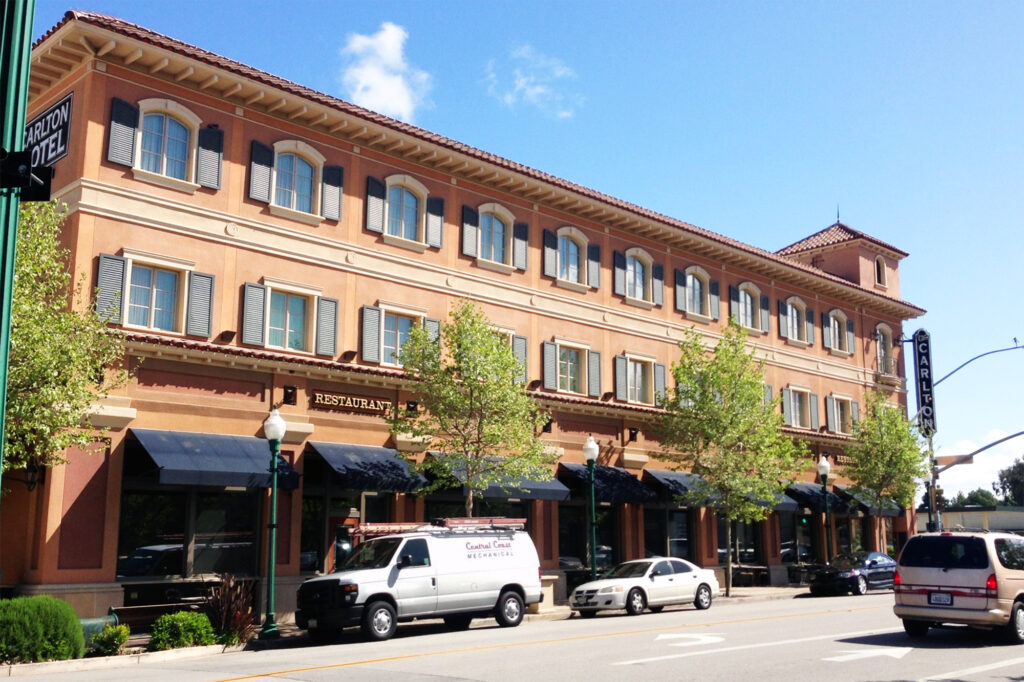If you reside in or have your principal place of business in California, Georgia, or Alabama and qualify as an “affected taxpayer” eligible for extended 1031 Exchange timelines, time is running out. Many buyers are adopting a wait-and-see approach, but is that the wisest strategy considering the current market conditions? Let’s delve deeper into the situation.
First and foremost, treasuries are experiencing their highest levels in 15 years and are still rising. As a result, borrowing money is becoming more expensive, making it harder to secure favorable lending rates for your replacement property.
Secondly, despite the economic slowdown, real estate pricing for quality assets remains relatively stable. Waiting for significant price drops, especially for credit tenants in sought-after areas with limited inventory, may not be a realistic expectation.
Moreover, lenders are exercising caution and scaling back their lending activities. This means that obtaining financing for your upleg property could be more challenging, potentially resulting in higher interest rates of 6.5% or more. Lenders are also increasing their loan-to-cost (LTC) and debt coverage ratio (DCR) requirements, demanding more equity in the deal.
So, what are the viable options for 1031 exchange buyers in this current climate?
All-cash purchases, loan assumptions, and seller-carry financing emerge as the most sensible choices. However, it’s crucial to consider other factors such as asset diversification and tax benefits. Each investor has unique goals based on various factors like financial targets (IRR, cash on cash, leveraged return on cost, etc.), maximizing after-tax cash flow, depreciation benefits, risk comfort level, day-to-day involvement, legacy wealth building, and more. All of these factors should be carefully weighed when evaluating your upleg property(s).
For simplicity purposes, suppose an investor purchases a $2,000,000 property with $1,000,000 in equity and $1,000,000 in debt at an 8% cap rate and a 6.5% interest rate. The cash-on-cash return is higher than if that investor purchased the same property at a 5% cap rate and a 3.5% interest rate. The cash-on-cash difference is respectively 7.96% vs. 5.36%, and if you are able to implement some of the tax strategies outlined below, the after-tax cash on cash could be even higher. [See examples below]
When assessing your 1031 exchange upleg, it is crucial to take into account risk mitigation and diversification. Suppose you recently sold an asset towards the end of 2022 or early 2023 that had certain unfavorable characteristics, such as a tenant with questionable credit, rental rates higher than the market average, a limited lease term remaining, or other less desirable factors. In such cases, opting to exchange into a more stabilized asset or multiple assets that help mitigate risk could be a sensible decision in the long run. Even if the new properties offer similar or slightly lower capitalization rates, the potential benefits of reducing risk and achieving diversification can outweigh the immediate financial considerations. By prioritizing stability and spreading your investments across different assets, you create a stronger foundation for long-term success in the 1031 exchange.
All-cash purchases enable buyers to bypass the challenges of securing financing and potentially receive cash discounts. This strategy facilitates a quick and straightforward transaction, minimizing the risk of missing the deadline. However, even at today’s rates, it may still make sense to secure a low-leverage, fully amortized, or even interest-only loan to maximize available capital and after-tax returns.
Loan assumptions present another opportunity for buyers. Assuming the existing loan on the replacement property can potentially secure favorable interest rates and terms, making the transaction more feasible. If dealing with a CMBS loan, it is highly recommended to work with a CMBS loan advisor like 1st Service Solutions to navigate the often-complicated process.
Lastly, seller-carry financing is worth considering. In this scenario, the seller acts as the lender and provides financing with more favorable terms than what is available in the market. However, it’s important to recognize that the seller has likely factored this into the asset’s pricing. Seller-carry financing can be an attractive solution for buyers struggling to secure traditional financing, needing to close faster than the lender can perform, or desiring more flexibility in loan terms.
When evaluating the current market and your exchange options, it’s crucial to consider the particular tax consequences and prioritize maximizing after-tax benefits. Although the cap rate of identified properties may not initially appear ideal given the current cost of debt, strategic planning can yield better-than-expected after-tax benefits. Consultation with a tax professional and accountant is essential to fully comprehend past, current, and projected future tax situations and explore potential options to maximize benefits.
Here are a few factors to consider (though not an exhaustive list):
Cost Segregation Study:
For income tax purposes, cost segregation studies involve allocating or reallocating the total cost or value of property into appropriate property classes and recovery periods, enabling proper computation of depreciation deductions based on individual property components. While beneficial for increased cash flow and reduced taxes, a cost segregation study may complicate a future like-kind exchange under Section 1031. If the replacement property contains less Section 1245 property than the relinquished property, prior depreciation will need to be recaptured as ordinary income to the extent of the gain.
Depreciation:
Bonus depreciation in real estate allows investors to deduct the full cost of capital improvements in the same tax year, including property acquisition. Deductions for property improvements were increased from 50% to 100% by the Tax Cuts and Jobs Act of 2017 (TCJA) and were available at 100% until the 2022 tax year, gradually decreasing until expiration at the end of the 2026 tax year (2023 = 80%, 2024 = 60%, etc.).
Change in Accounting Method:
While Bonus Depreciation is optional, any taxpayer wishing to forgo it in a given tax year must elect out. Filing a Change in Accounting Method and Depreciation form with the IRS allows taxpayers to file amended returns and take advantage of Bonus Depreciation.
Energy Efficiency Tax Credits:
Evaluate tax credits, depreciation, and Commercial PACE financing programs. Some states offer tax incentives and C-PACE loan programs enabling property owners to finance upfront costs of energy or other eligible improvements and repay them over time through a voluntary assessment. C-PACE assessments are attached to the property rather than an individual and can often be passed through to tenants as a triple net expense, potentially increasing the asset’s NOI by reducing certain non-recoverable expenses.
In conclusion, 1031 exchange buyers need to be proactive and strategic, considering the current market conditions, tax strategies, and working closely with a team of experts. Capital Rivers Commercial, a specialized firm, can assist you in navigating this complex landscape. With treasuries on the rise, stable pricing, limited inventory, and lenders tightening their criteria, waiting for the market to stabilize may not be the optimal course of action. Instead, explore options like all-cash purchases, loan assumptions, and seller-carry financing, while also considering risk diversification and tax benefits. By taking advantage of the available opportunities before the October 16th deadline approaches, you can ensure a successful 1031 exchange.
For more information on the extensions, you can find the IRS disaster notices here or get additional information from our friends at Asset Preservation here.
It’s important to note that since the extension periods are quite long, section 17.02 of Revenue Procedure 2018-58 stipulates that the extension cannot exceed one year. This applies to section 17 extensions where the relinquished property closed before October 16, 2022.
As always, consult with your tax advisors to determine your eligibility for an extension and to ascertain your new deadline dates.
Cash on Cash Return Examples:
- If you are to acquire a property for $2,000,000 with $1,000,000 in equity and $1,000,000 in debt at a 6.5% interest rate fully amortized over 25 years and an NOI of $160,000 (i.e. an 8% cap Rate) the cash on cash return would be 7.96%
- If you are to acquire a property for $2,000,000 with $1,000,000 in equity and $1,000,000 in debt at 6.5% interest only and an NOI of $160,000 (i.e. an 8% Cap Rate) the cash on cash return would be 6.5%
- If you are to acquire a property for $2,000,000 with $1,000,000 in equity and $1,000,000 in debt at 3.5% fully amortized over 25 years and an NOI of $100,000 (i.e. an 5% Cap Rate) the cash on cash return would be 5.36%
- If you are to acquire a property for $2,000,000 with $1,000,000 in equity and $1,000,000 in debt at 3.5% interest only an NOI of $100,000 (i.e. an 5% Cap Rate) the cash on cash return would be 5.36%




